Cave of the Angel (locally known as Cueva del Ángel), near Lucena in Cordoba province, Andalucia is a cluster of three archaeological sites embedded in a karstic hillside 620 metres above sea level
By Nick Nutter | Updated 15 Mar 2022 | Córdoba | Places To Go |
Login to add to YOUR Favourites or Read Later


Excavations Site 3 (Image courtesy of Turismo Lucena)
First discovered in 1995, the Cave of the Angel (locally known as Cueva del Ángel), near Lucena in Cordoba province, Andalucia is a cluster of three archaeological sites embedded in a karstic hillside 620 metres above sea level. Excavations started in 2004.

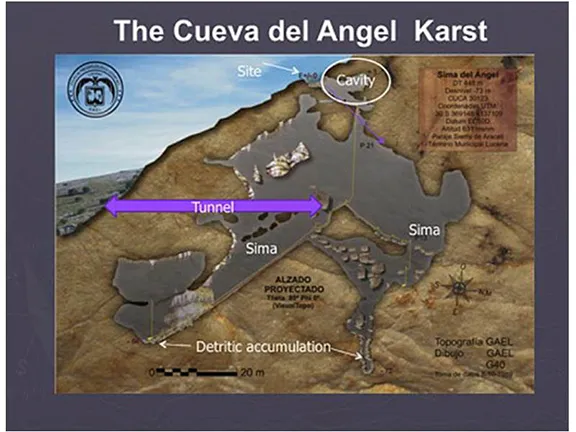
Plan of Angel's Cave (Image courtesy of Turismo Lucena)
The first site is an outdoor platform that was excavated until 2011. This area was probably a cave shelter at the entrance to the cave proper, that collapsed during the Late Pleistocene (between 129,000 and 11,700 years ago).
The second site is a cave a few metres from the platform. This cave is filled with collapsed blocks.
The third site is a chasm, 100 metres in depth located beneath the second site. Two small passages connected the two sites. In the chasm is a 70 metre deep cone of debris composed of sand, rock together with animal bones, predominantly horse, cattle and deer, some of which featured cutmarks indicative of bone marrow extraction, and stone tools. Other animals present include brown bear, lynx, wild boar, rabbit and ibex. Bones from two animals that went extinct during the Late Pleistocene have also been found, Stephanorhinus hemitoechus (a two horned rhinoceros), Palaeloxodon antiquus (a straight tusked elephant). Excavations have also revealed a 1.5 metre deep area of combustion with no evidence of individual hearths, indicating long term occupation at some stage. About 90% of the animal bones so far recovered were exposed to fire. The almost total lack of carnivore remains indicates that humans were in permanent occupation, carnivores tend to move into caves between periods of human habitation.
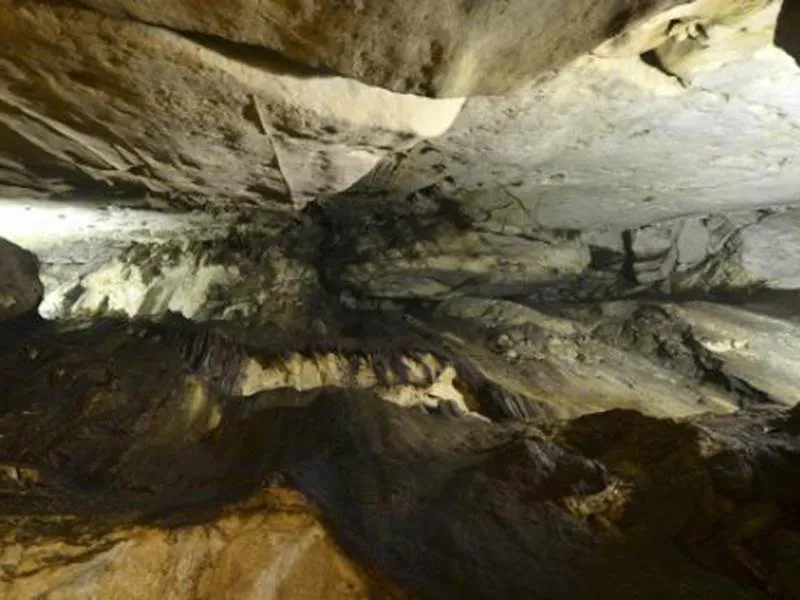
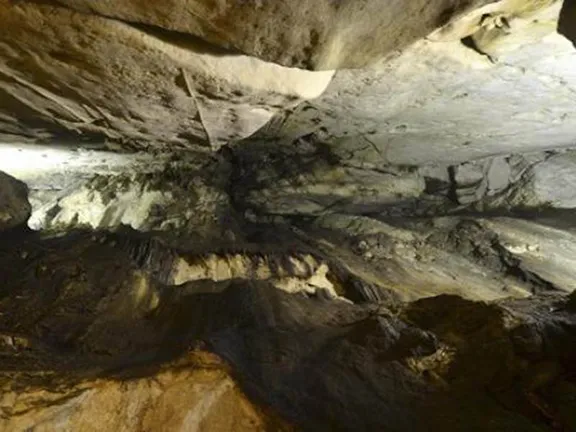
The Chasm Site 3 (Image courtesy of Turismo Lucena)
The stone tools found are Acheulian, therefore associated with pre-Neanderthal species and early Neanderthals, that were in use between 1.8 mya and as late as 130 kya. The cave revealed the remains of over 40 Acheulean handaxes, characteristic stone tools of the Middle Pleistocene (between 780 and 126 kya) The assemblage of stone tools were almost entirely the result of later stages of stone tool manufacture. Few had cortex (rough outer layer of rock) and most were found in various stages of retouch, the final phase of a stone tools production process.
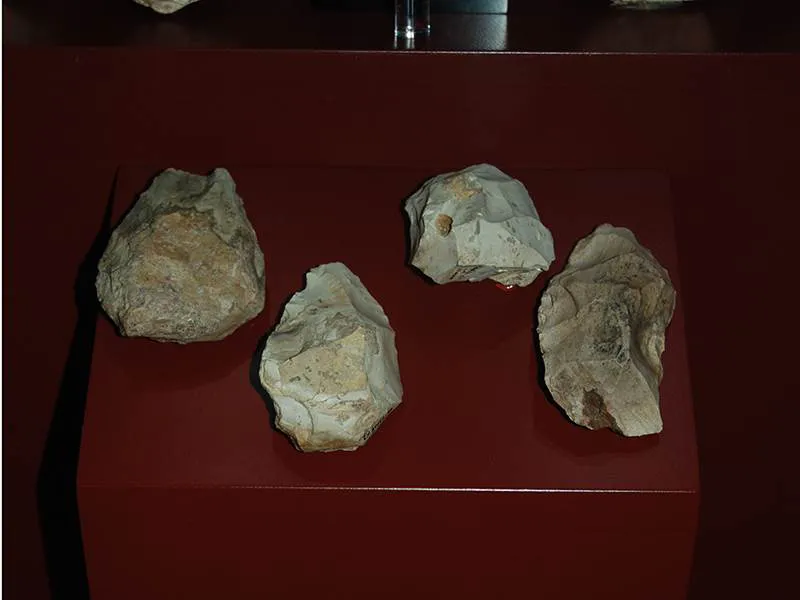

Acheulian handaxes (Lucena Archaeological Museum)
Dating the site is a challenge. Excavations in 2016 unearthed a stratigraphic profile representing stone artifacts and fauna suggesting an age of 500,000 years. Uranium Series Disequilibrium Dating of geological and archaeological samples from the upper most and lowest levels of the stratigraphic sequence gave dates of 121,000 years for the upper level and more than 369,000 years for the lower.
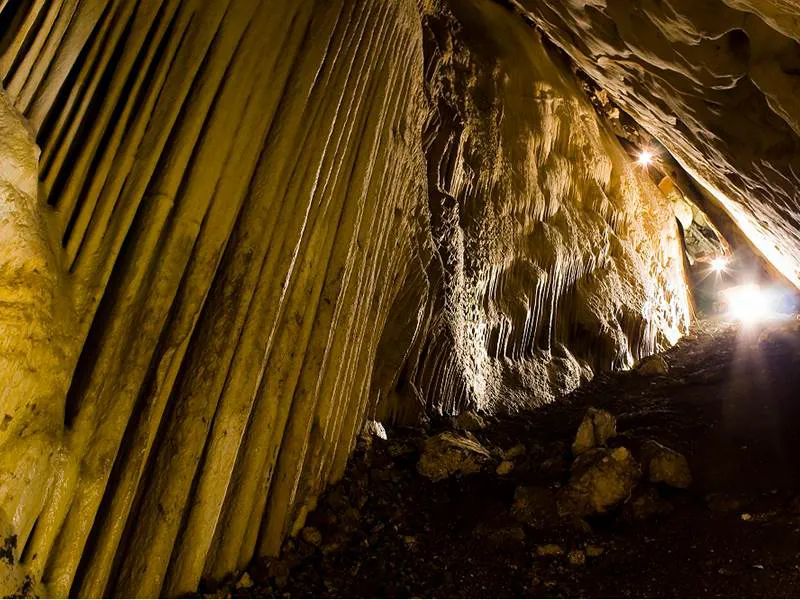
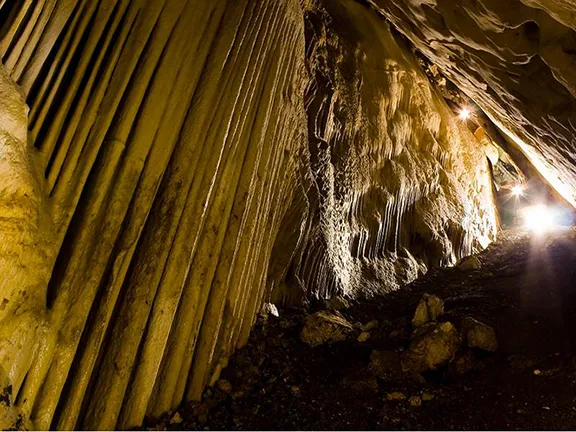
Cueva de Angel (Image courtesy of Turismo Lucena)
Human remains were first found in the excavations of 2012. It is a female femur found in association with Acheulean tools. The degree of fossilisation indicates she was pre-Neanderthalis, probably Homo heidelbergensis. In 2013, over 800 Homo sapiens remains were found in the debris cone, including some skulls. These remains date to the Neolithic and Chalcolithic periods, so between 5800 BC and 2500 BC. The Neolithic bones show evidence of fire and cut marks that could be indicative of cannibalism or a de-fleshing process as part of the burial ceremony. It appears that corpses were laid in the cave (site 2) to decompose and then pushed into the chasm (site 3).
Homo heidelbergensis evolved from around 700,000 years ago, a hominin that may have provided a lot of the Acheulean material at the site. Around about 400,000 years ago, Homo heidelbergensis evolved into Homo neanderthalensis in Europe. Neanderthals survived in Andalucia until around 30 kya. Modern humans made their first appearance in Andalucia, to date, about 28 kya.
So here we have an archaeological complex in southern Spain that featured hominins and other fauna for the best part of half a million years. Hominins occupied this site quite intensely as demonstrated by the wealth of lithic remains.
The summer of 2015 brought two new exciting discoveries. Over 15 varieties of seeds were uncovered dating somewhere between 200 and 300 kya. Some were successfully identified as varieties of olive. Previously, the oldest seeds were pine nuts, no more than 20,000 years of age and these new palynological remains are over 10 times older.
Dr. Dorian Fuller of the UCL Institute of Archaeology, an expert on the origins of agriculture, has been enlisted to work on the evidence. The site may also feature traces of resin, dating to about the same range as the seeds, which could have been used to haft hand axes to wooden handles.
It is early days yet (2020) for Cueva del Ángel with many of the findings still to be published but archaeologists are already suggesting that the cave will become as important as those at Atapuerca.
In 2014 an 80 metre long tunnel was created to take visitors and researchers to the chasm (site 3). The Cueva del Ángel can be visited by appointment. Ring 957 503662 to check availability.
Ortega, DB; et al. (2006). "La Cueva del Ángel (Lucena, Córdoba), a site of the Middle and Early Pleistocene in the south of the Iberian Peninsula". Trabajos de Prehistoria. 63 (2): 153–165.
Ruíz, CB; et al. (2011). "The Cueva del Angel (Lucena, Spain): An Acheulean hunters habitat in the South of the Iberian peninsula". Quaternary International. 243 (1): 105–126.
Ruíz, CB; et al. (2012). "La Cueva del Ángel (Lucena, Córdoba): Un hábitat Achelense de cazadores en Andalucía". Menga. Revista de prehistoria de Andalucía.